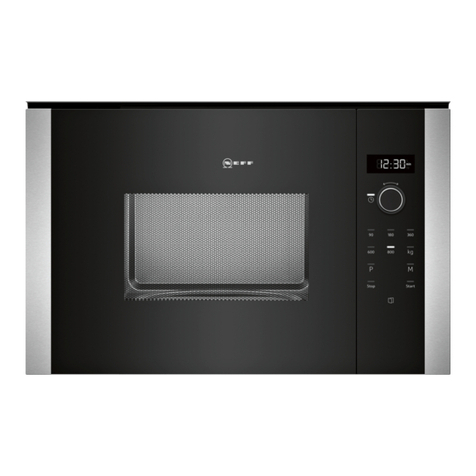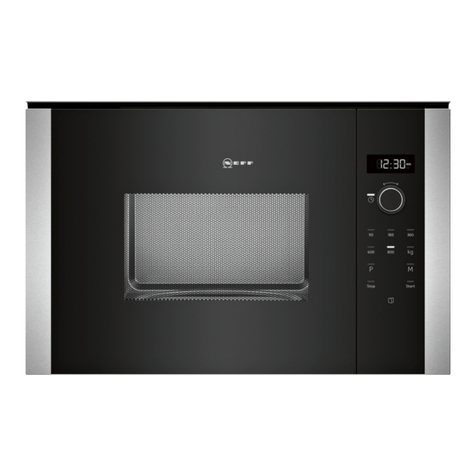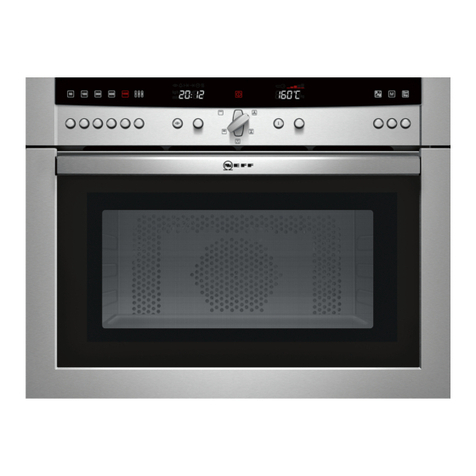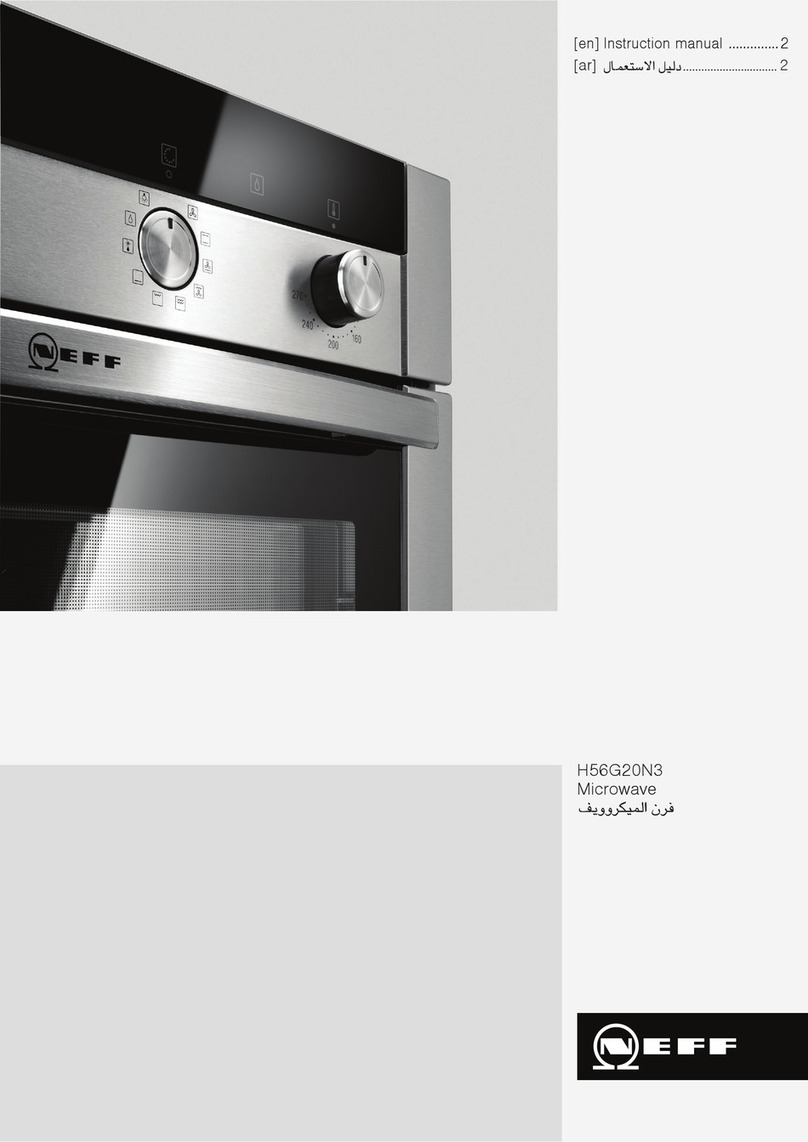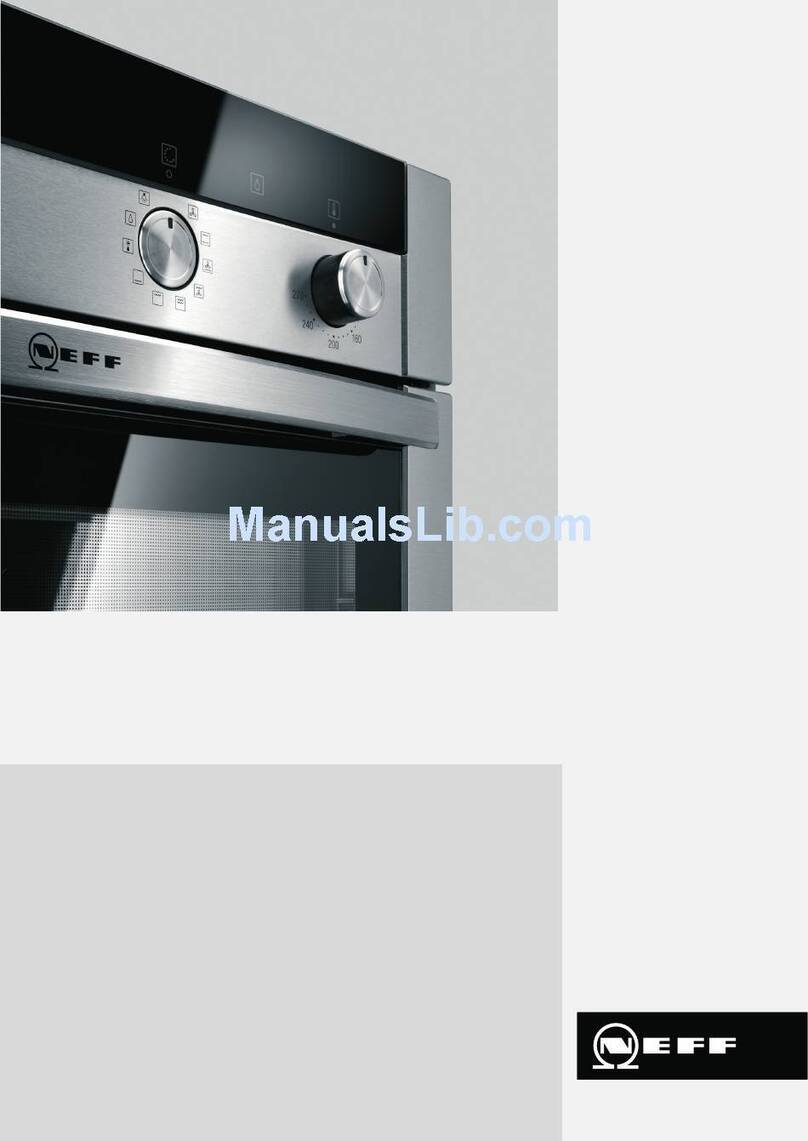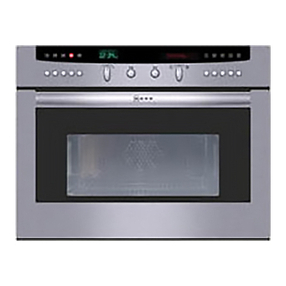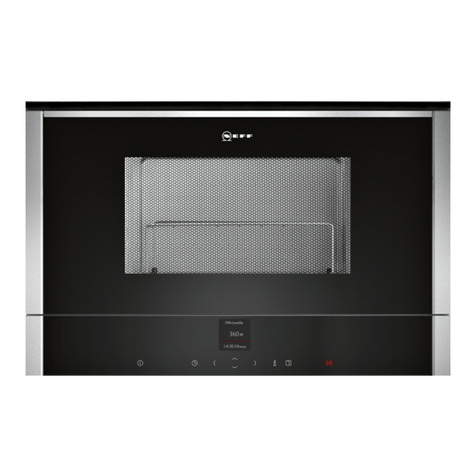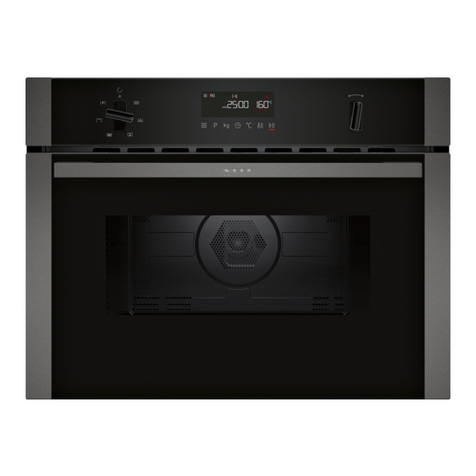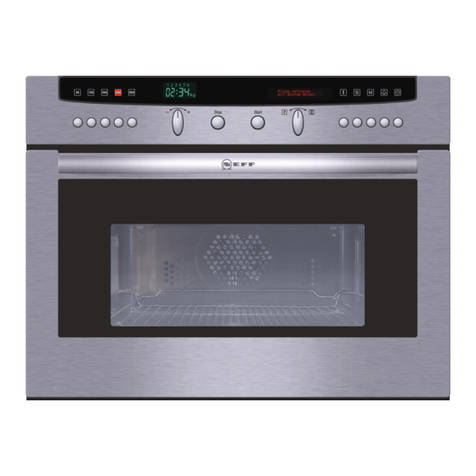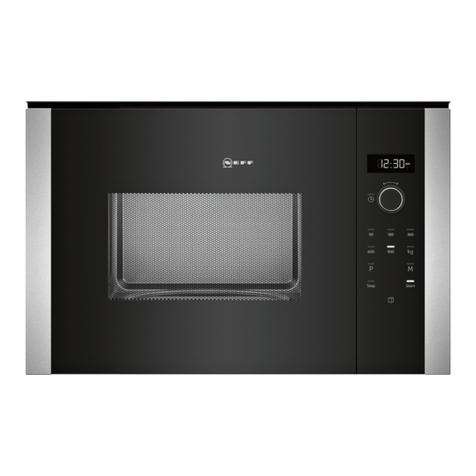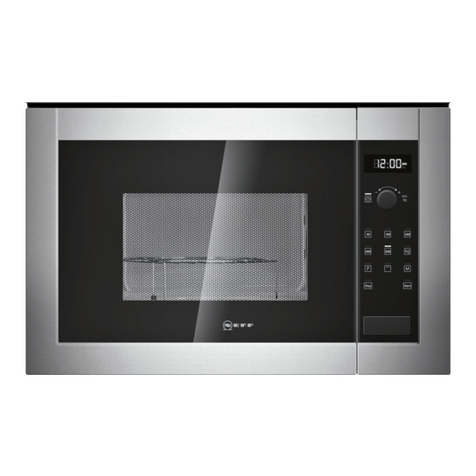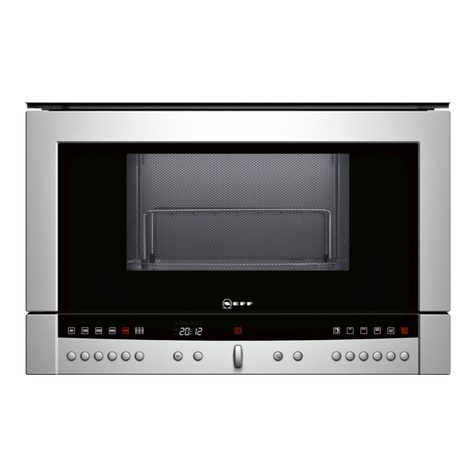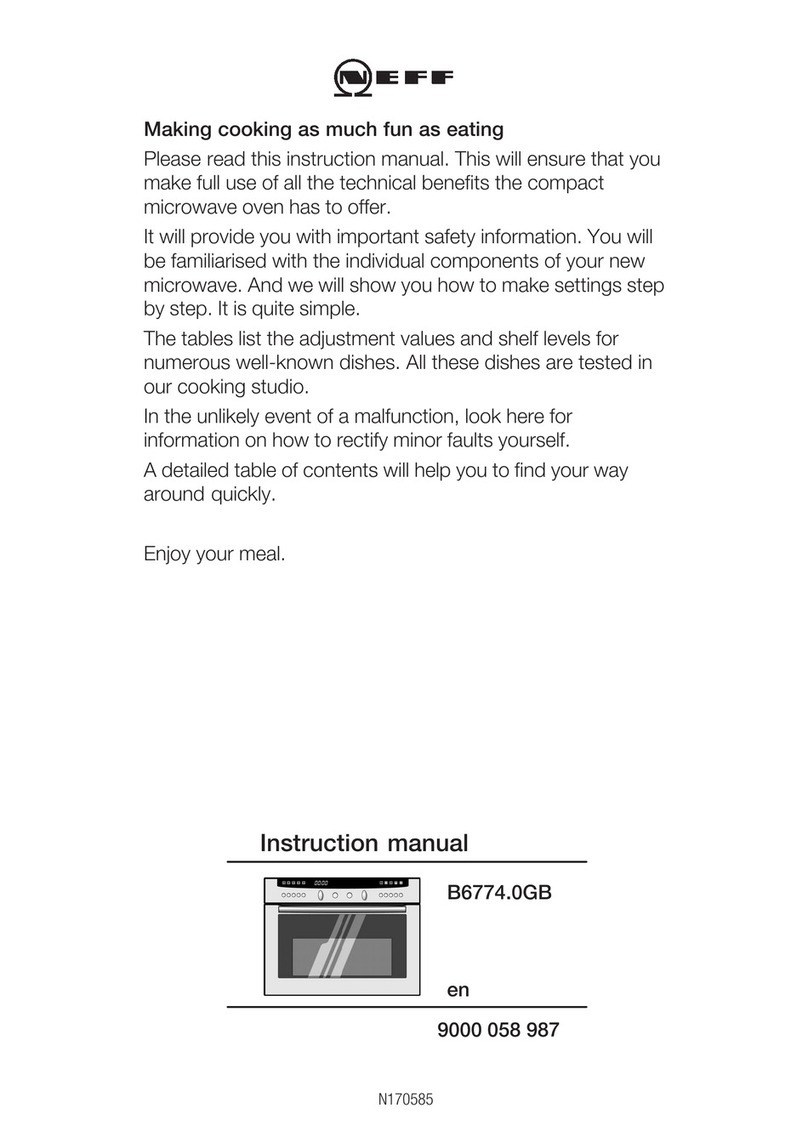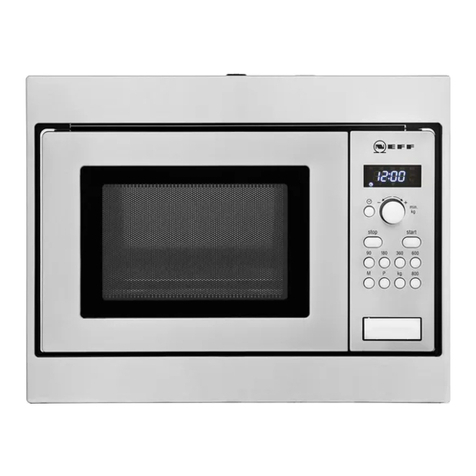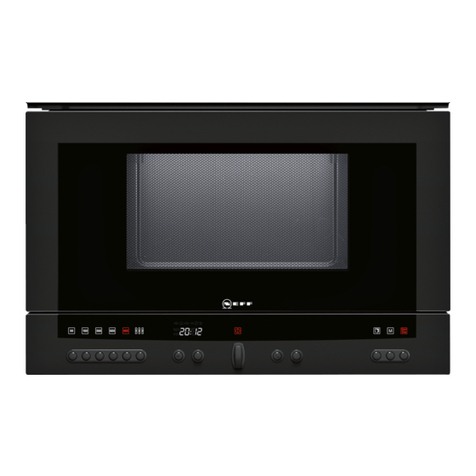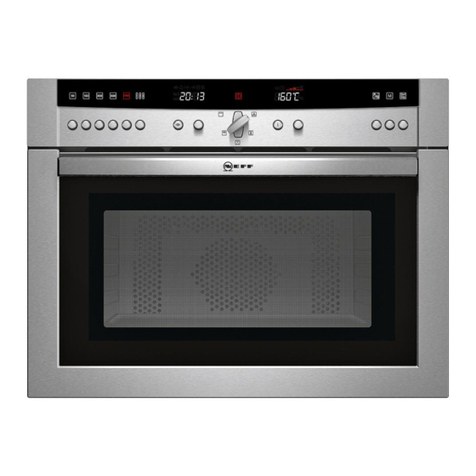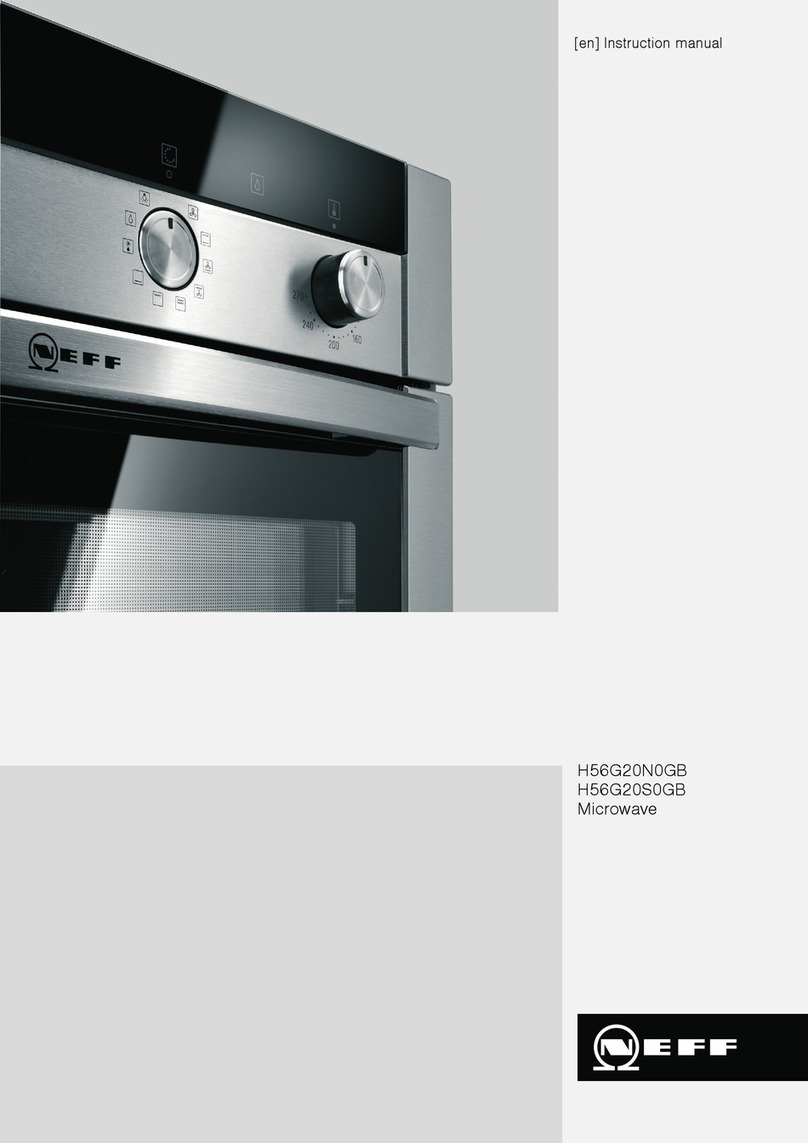
2
ÚTable of contents
[en]Instructionmanual
Safety precautions..................................................................... 3
Before installation ...............................................................................3
Safety notes .........................................................................................3
Information on the microwave..........................................................4
Causes of damage .............................................................................5
Energy and environment tips ................................................... 5
Saving energy......................................................................................5
Environmentally-friendly disposal.....................................................5
Your new appliance ................................................................... 6
Control panel .......................................................................................6
Operating modes................................................................................6
Shelf positions .....................................................................................7
Accessories .........................................................................................7
Cooking compartment .......................................................................7
Switching the appliance on and off ......................................... 8
Switching on ........................................................................................8
Switching off.........................................................................................8
Before using the appliance for the first time........................... 8
Setting the clock .................................................................................8
Heating up the cooking compartment............................................8
Cleaning the accessories..................................................................8
Operating the appliance............................................................ 8
Setting the operating mode and temperature...............................9
MicroCombi, gentle/MicroCombi, intensive...................................9
Heating indicator.................................................................................9
Setting rapid heating ....................................................................... 10
The microwave ......................................................................... 10
Notes regarding ovenware............................................................. 10
Microwave power settings.............................................................. 10
Setting the microwave..................................................................... 11
Combination............................................................................. 11
Suitable microwave power settings.............................................. 11
Setting a combination ..................................................................... 11
Series of operations ................................................................ 12
Ovenware ......................................................................................... 12
Setting a series of operations ....................................................... 12
Memory..................................................................................... 12
Storing settings in the memory ..................................................... 12
Starting the memory........................................................................ 12
Electronic clock ....................................................................... 13
Clock display .................................................................................... 13
Minute minder................................................................................... 13
Cooking time .................................................................................... 13
End of operation .............................................................................. 14
Preset operation............................................................................... 14
Setting the clock .............................................................................. 14
Childproof lock......................................................................... 14
Lock.................................................................................................... 14
Permanent lock ................................................................................ 14
Automatic safety cut-out................................................................. 15
Auto start.................................................................................. 15
Basic settings........................................................................... 15
Changing the basic settings.......................................................... 16
Pyrolytic cleaning .....................................................................16
Preparation........................................................................................ 16
Setting pyrolytic cleaning ............................................................... 16
After cleaning ................................................................................... 16
Care and cleaning.....................................................................17
Cleaning agents............................................................................... 17
Cleaning the glass panels ............................................................. 17
Faults and repairs.....................................................................18
Malfunction table.............................................................................. 19
Replacing the oven light bulb ....................................................... 19
Replacing the door seal ................................................................. 20
After-sales service....................................................................20
E number and FD number ............................................................. 20
Automatic programmes ...........................................................21
Selecting a programme.................................................................. 21
Adjusting individually....................................................................... 21
Defrosting and cooking with the automatic programmes ....... 21
Tested for you in our cooking studio......................................26
Defrosting, heating up and cooking with the microwave......... 26
Microwave tips ................................................................................. 29
Cakes and pastries ......................................................................... 29
Baking tips ........................................................................................ 31
Roasting and grilling ....................................................................... 31
Tips for roasting and grilling.......................................................... 35
Bakes, gratins, toast with toppings .............................................. 35
Convenience products.................................................................... 35
Slow cooking.............................................................................36
Using low-temperature cooking .................................................... 36
Slow cooking .................................................................................... 37
Tips for slow cooking...................................................................... 37
Test dishes ................................................................................37
Baking................................................................................................ 38
Grilling................................................................................................ 38
Acrylamide in foodstuffs .........................................................38
Produktinfo
Additional information on products, accessories, replacement
parts and services can be found at www.neff-
international.com and in the online shop www.neff-
eshop.com

